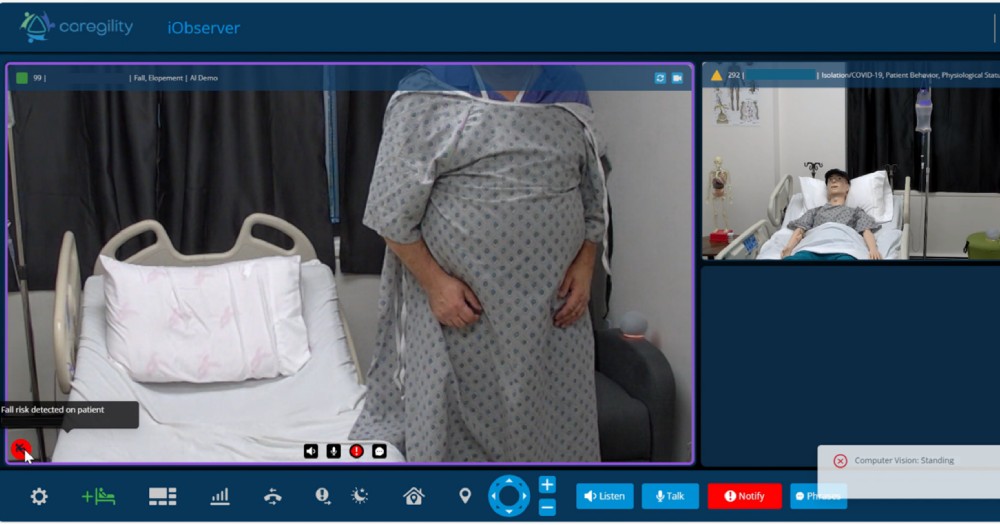Company launches edge-based computer vision AI solution for fall detection

New Jersey-based Caregility Corporation has recently announced a significant advancement in its iObserver solution — a new AI-powered fall risk detection capability. This innovation is designed to enhance patient safety and marks a pivotal shift in how AI can be deployed in healthcare settings.
How does it work?
Caregility's latest feature in the iObserver solution utilizes computer vision to continuously monitor patients who are at risk of falls or self-harm. Unlike traditional methods that rely heavily on cloud computing, Caregility's AI technology operates directly on edge devices within patient rooms.
These telehealth edge devices, known as Access Point of Care Systems (APS), are installed in over 15,000 hospital rooms globally.
By processing visual data locally, the system can detect potential fall risks in real time and immediately alert caregivers, ensuring timely intervention. Moreover, this localized processing reduces the need for expensive cloud infrastructure and enhances data privacy and security.
Why does it matter?
The significance of Caregility's innovation extends beyond just technological advancement. In an era where data privacy and operational efficiency are paramount, the ability to run AI algorithms on edge devices offers a scalable, cost-effective solution that many healthcare providers are seeking.
"We're redefining the future of telehealth with AI-powered edge computing," says Bin Guan, Caregility's Chief Innovation Officer, emphasizing the company's role in breaking down barriers to AI adoption.
Furthermore, by eliminating the need for streaming patient data to the cloud, Caregility's approach safeguards sensitive information, reinforcing its commitment to responsible AI.
The context
As healthcare continues to evolve, the integration of AI into patient care is becoming increasingly critical. However, the challenge has often been in balancing technological innovation with practical application and ethical considerations. Caregility's development of AI capabilities that function on edge devices within hospital rooms represents a significant step forward in this regard.
"Our open and adaptable platform allows us to develop native AI capabilities when possible while also evaluating other third-party solutions to determine if they can add value to caregivers' workflows," notes Kedar Ganta, Caregility's Chief Product and Engineering Officer.
This breakthrough in AI technology demonstrates Caregility's leadership in telehealth and its vision for the future of patient care — where advanced technology seamlessly integrates into everyday clinical workflows, enhancing both efficiency and patient outcomes.
💡Did you know?
You can take your DHArab experience to the next level with our Premium Membership.👉 Click here to learn more
🛠️Featured tool
 Easy-Peasy
Easy-Peasy
An all-in-one AI tool offering the ability to build no-code AI Bots, create articles & social media posts, convert text into natural speech in 40+ languages, create and edit images, generate videos, and more.
👉 Click here to learn more


